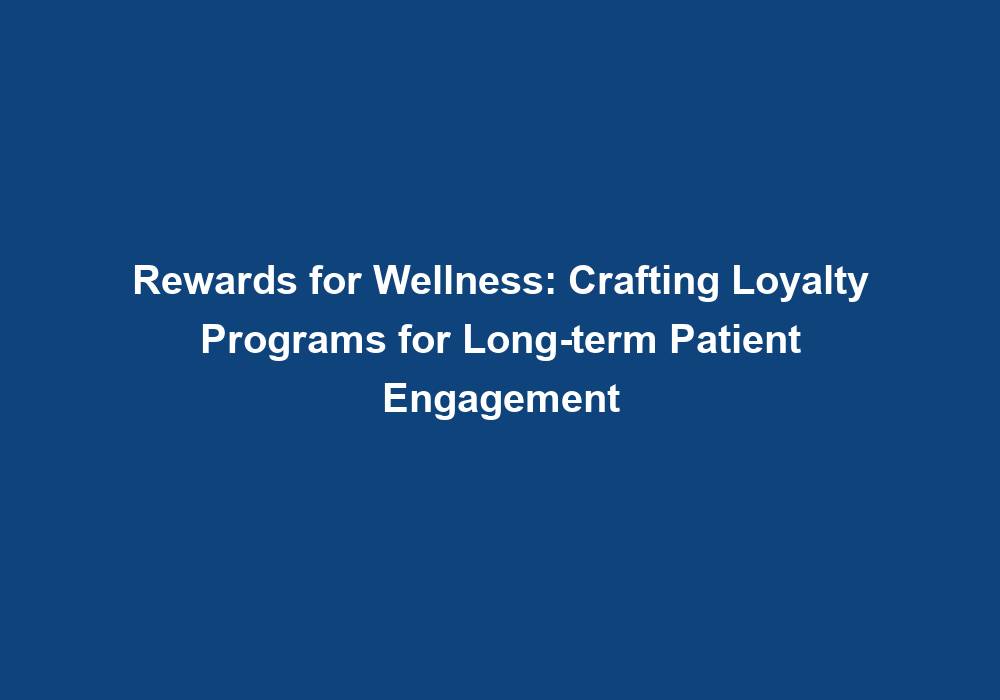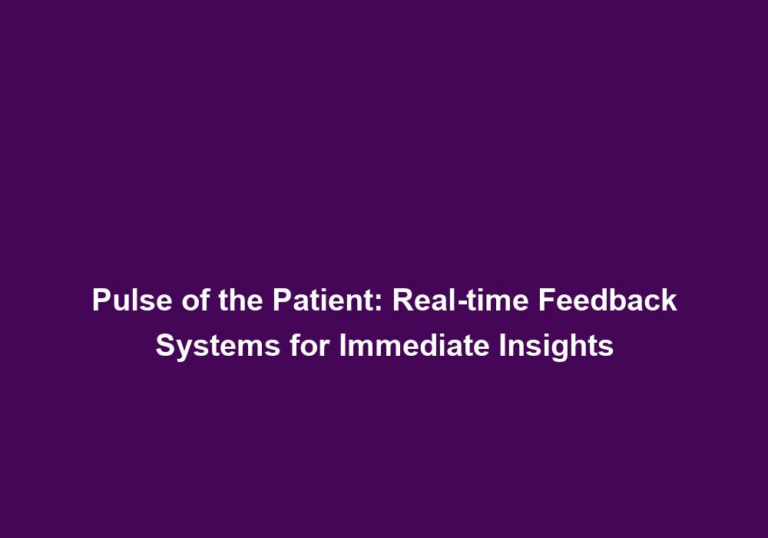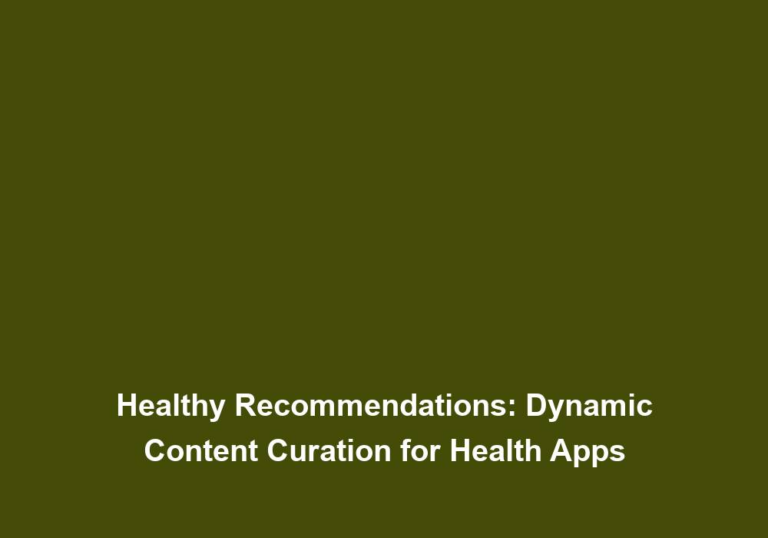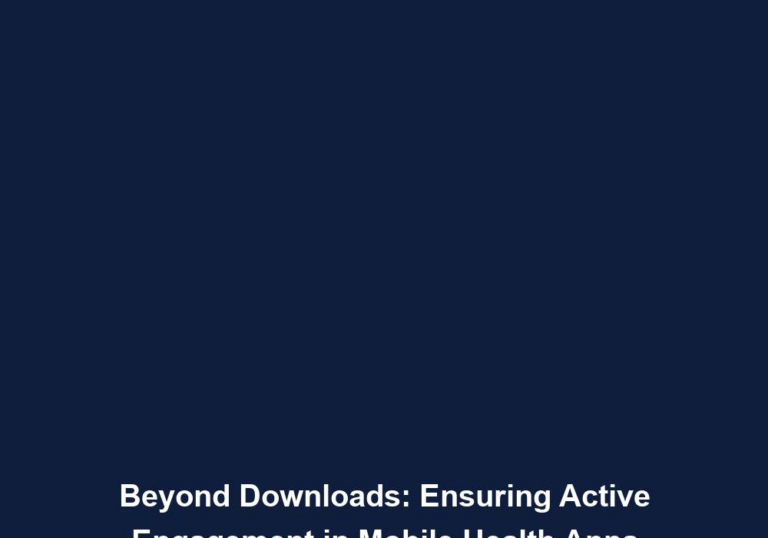Rewards for Wellness: Crafting Loyalty Programs for Long-term Patient Engagement
In today’s fast-paced world, where healthcare is becoming increasingly competitive, it has become vital for healthcare providers to find innovative ways to engage with their patients on a long-term basis. One effective strategy that has gained significant traction is the implementation of rewards and loyalty programs. These programs not only foster patient loyalty but also promote overall wellness and engagement. In this article, we will delve into the importance of crafting rewards programs for long-term patient engagement and explore effective strategies for their implementation.
The Importance of Loyalty Programs in Healthcare
Healthcare providers understand the importance of patient satisfaction in building a successful practice. Implementing a well-designed loyalty program can significantly enhance patient satisfaction. By offering incentives and rewards for continued engagement, patients feel valued and appreciated, leading to increased loyalty towards the healthcare provider. This can result in improved patient outcomes as satisfied patients are more likely to adhere to treatment plans and follow through with recommended care.
Loyalty programs play a crucial role in encouraging patient retention. When patients feel acknowledged and rewarded for their loyalty, they are more likely to continue seeking healthcare services from the provider, thus reducing patient attrition rates. This not only ensures a stable patient base but also allows healthcare providers to establish long-term relationships with their patients, leading to better continuity of care and improved health outcomes.
Rewards programs can be designed in a way that encourages patients to proactively manage their health and engage in preventive care. By offering rewards for regular check-ups, vaccinations, or other wellness activities, healthcare providers can emphasize the importance of maintaining good health. This proactive approach not only helps in preventing the onset of chronic diseases but also promotes overall wellness and a healthier community.
Key Elements of an Effective Rewards Program
To ensure the success of a loyalty program in the healthcare sector, there are a few key elements that need to be considered:
1. Personalization and Customization
Tailoring the rewards program to the individual needs and preferences of patients is crucial for its effectiveness. By understanding the unique characteristics of each patient, healthcare providers can create personalized incentives that resonate with them. This can be achieved through the collection and analysis of patient data, such as demographics, medical history, and preferences. By leveraging this information, healthcare providers can offer rewards that are meaningful and relevant to each individual, increasing the likelihood of engagement and loyalty.
2. Tiered Reward Structure
Implementing a tiered reward structure can provide patients with a sense of progression and achievement. By offering different levels or tiers based on specific milestones or actions, patients are motivated to actively participate in the program and strive for higher rewards. For example, patients could progress from Bronze to Silver and eventually Gold levels based on their level of engagement. This tiered structure not only adds an element of excitement but also encourages patients to continue their engagement with the program in order to unlock greater benefits.
3. Gamification
Incorporating elements of gamification into the rewards program can make the experience more enjoyable and engaging for patients. By introducing challenges, competitions, or interactive elements, patients are encouraged to actively participate and earn rewards. This gamified approach can create a sense of excitement and motivation, leading to increased patient engagement. For example, healthcare providers can create wellness challenges where patients earn points for achieving certain health goals or completing specific tasks. These points can then be redeemed for rewards, creating a fun and rewarding experience for patients.
4. Multichannel Communication
Utilizing multiple communication channels, such as email, SMS, mobile apps, and social media, is essential for reaching a wide range of patients and ensuring effective program engagement. By providing regular updates, reminders, and personalized messages, healthcare providers can maintain constant communication with patients and keep them informed about their progress and available rewards. This multichannel approach allows healthcare providers to engage with patients in a way that is convenient and accessible to them, increasing the likelihood of program participation and ongoing engagement.
Examples of Rewardable Actions and Incentives
When designing a rewards program for long-term patient engagement, it is important to identify specific actions that patients can take to earn rewards. Here are some examples of rewardable actions and incentives:
-
Attending Regular Check-ups: Patients who consistently attend their scheduled check-ups can earn points or credits that can be redeemed for various rewards, such as discounts on future medical services or wellness products. This not only incentivizes patients to prioritize their health but also reinforces the importance of regular healthcare visits.
-
Health and Wellness Activities: Encouraging patients to engage in activities that promote their overall well-being can be rewarded. This may include completing online health assessments, participating in fitness challenges, or attending educational workshops. By rewarding these activities, healthcare providers can motivate patients to adopt healthier lifestyle choices and actively participate in their own care.
-
Medication Adherence: Promoting medication adherence is crucial for the successful management of chronic conditions. Offering incentives for timely medication refills or regular medication adherence can significantly improve patient outcomes. Patients can earn rewards for consistently taking their medications as prescribed, which not only helps them manage their condition but also reduces the risk of complications and hospitalizations.
-
Referrals: Rewarding patients for referring friends or family members to the healthcare provider not only helps in expanding the patient base but also strengthens patient loyalty. This can be done by providing discounts on services or exclusive access to premium healthcare offerings. By incentivizing referrals, healthcare providers can tap into their existing patient network to attract new patients and foster a sense of community and loyalty.
Implementing and Measuring the Success of a Rewards Program
When implementing a rewards program for long-term patient engagement, it is essential to establish clear goals and metrics to measure its success. Some key considerations include:
-
Tracking Program Engagement: Utilize analytics and data tracking tools to monitor patient engagement with the rewards program. This includes tracking the number of active participants, redemption rates, and overall program satisfaction. By analyzing these metrics, healthcare providers can identify areas for improvement and make data-driven decisions to enhance the program’s effectiveness.
-
Assessing Patient Retention: Measure patient retention rates before and after the implementation of the rewards program to evaluate its impact on reducing patient attrition. By comparing these rates, healthcare providers can assess the program’s effectiveness in fostering long-term patient loyalty and engagement.
-
Patient Feedback: Regularly collect feedback from program participants to understand their experience, identify areas for improvement, and gather insights on their preferences and expectations. This can be done through surveys, focus groups, or one-on-one interviews. By incorporating patient feedback, healthcare providers can continuously refine and optimize the rewards program to better meet patient needs and expectations.
By diligently monitoring these metrics, healthcare providers can refine their rewards program over time, ensuring its alignment with patient needs and preferences.
Conclusion
Crafting rewards programs for long-term patient engagement is a powerful strategy for healthcare providers to foster patient loyalty, enhance satisfaction, and promote overall wellness. By personalizing incentives, implementing a tiered structure, incorporating gamification elements, and utilizing multichannel communication, healthcare providers can design effective rewards programs that drive patient engagement. Furthermore, by rewarding actions such as attending regular check-ups, engaging in health and wellness activities, promoting medication adherence, and encouraging referrals, healthcare providers can actively promote long-term patient engagement and loyalty. Ultimately, a well-designed rewards program can significantly contribute to the overall success and growth of a healthcare organization.







